Abstract
Two differences between ratio and interval performance are well known: (a) Higher rates occur on ratio schedules, and (b) ratio schedules are unable to maintain responding at low rates of reinforcement (ratio “strain”). A third phenomenon, a downturn in response rate at the highest rates of reinforcement, is well documented for ratio schedules and is predicted for interval schedules. Pigeons were exposed to multiple variable-ratio variable-interval schedules in which the intervals generated in the variable-ratio component were programmed in the variable-interval component, thereby “yoking” or approximately matching reinforcement in the two components. The full range of ratio performances was studied, from strained to continuous reinforcement. In addition to the expected phenomena, a new phenomenon was observed: an upturn in variable-interval response rate in the midrange of rates of reinforcement that brought response rates on the two schedules to equality before the downturn at the highest rates of reinforcement. When the average response rate was corrected by eliminating pausing after reinforcement, the downturn in response rate vanished, leaving a strictly monotonic performance curve. This apparent functional independence of the postreinforcement pause and the qualitative shift in response implied by the upturn in variable-interval response rate suggest that theoretical accounts will require thinking of behavior as partitioned among at least three categories, and probably four: postreinforcement activity, other unprogrammed activity, ratio-typical operant behavior, and interval-typical operant behavior.
Keywords: ratio schedules, interval schedules, postreinforcement pause, feedback functions, multiple schedules, matching law, key peck, pigeons
Full text
PDF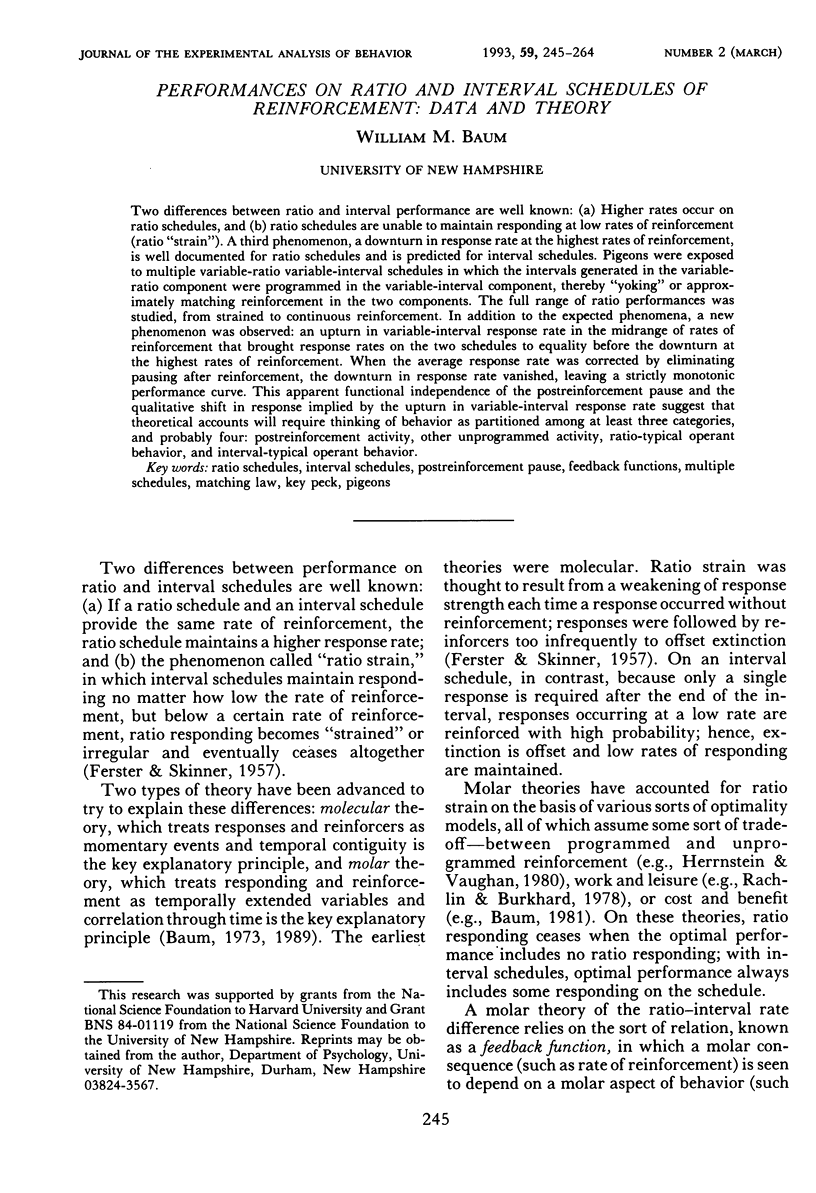
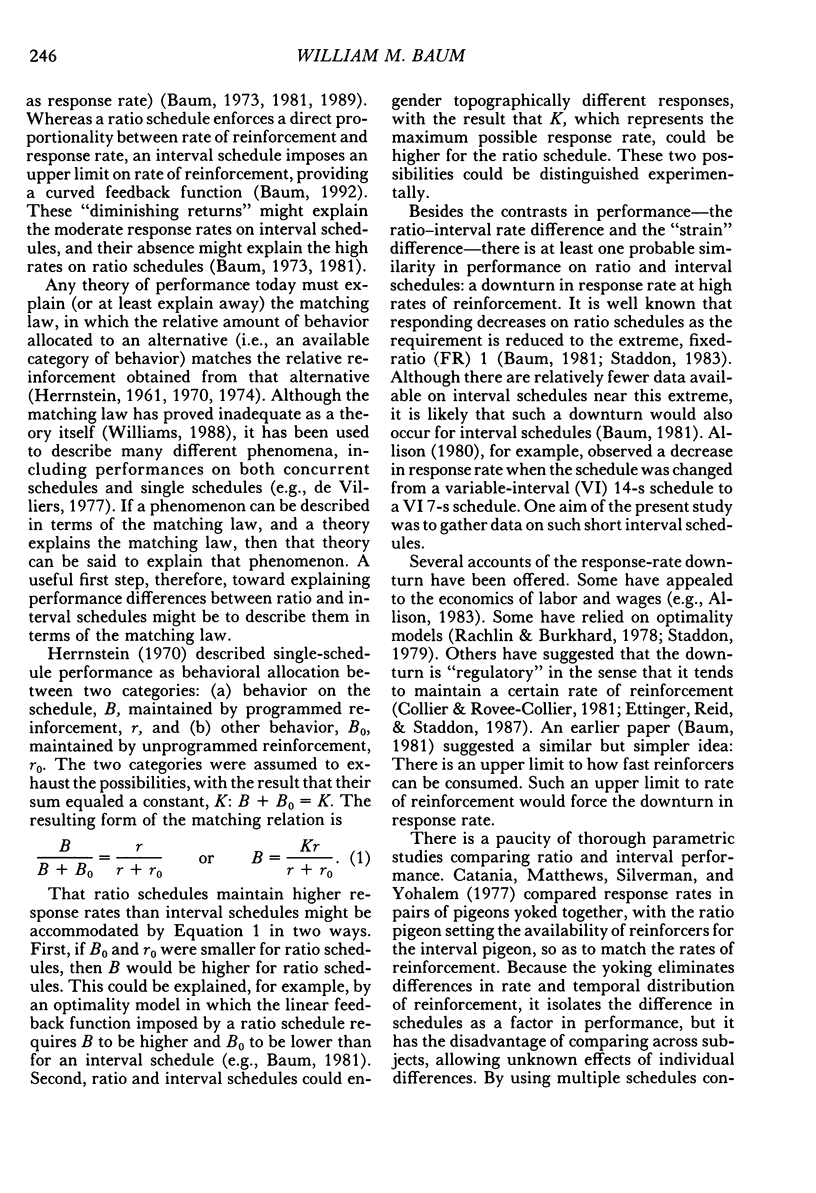
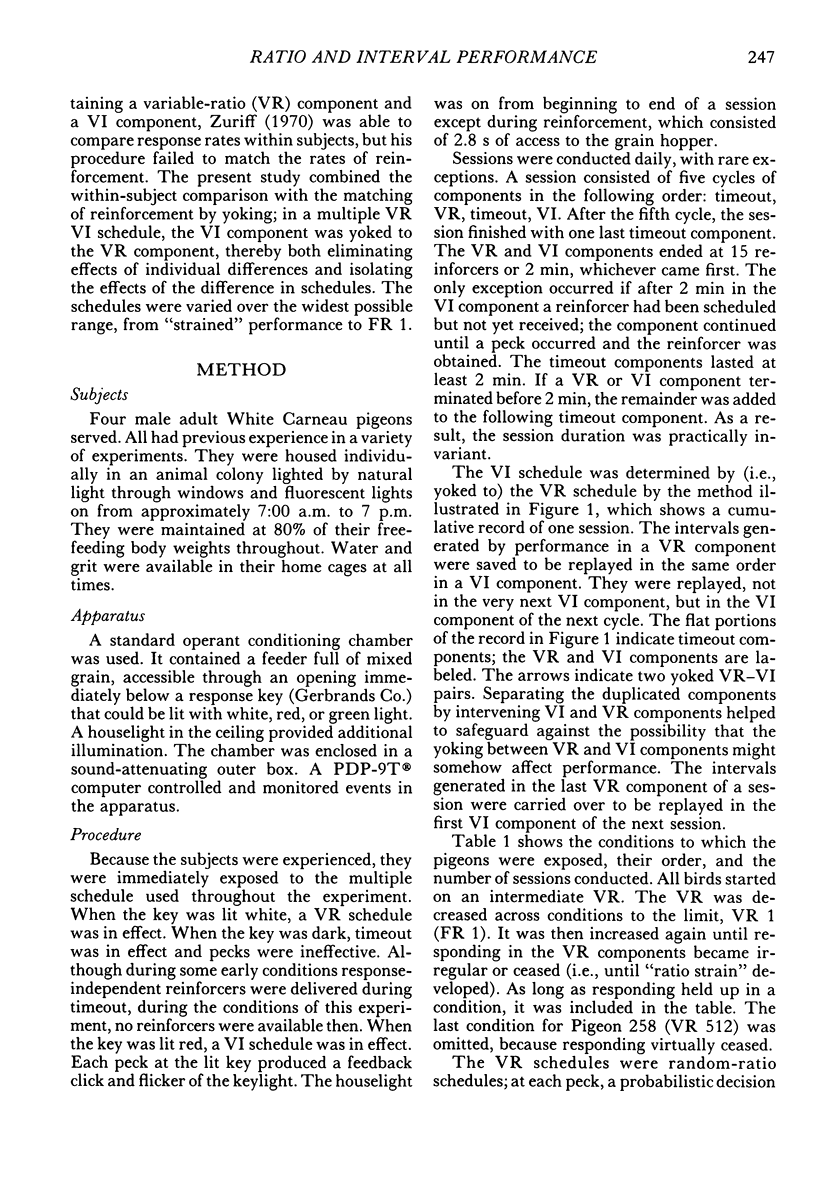
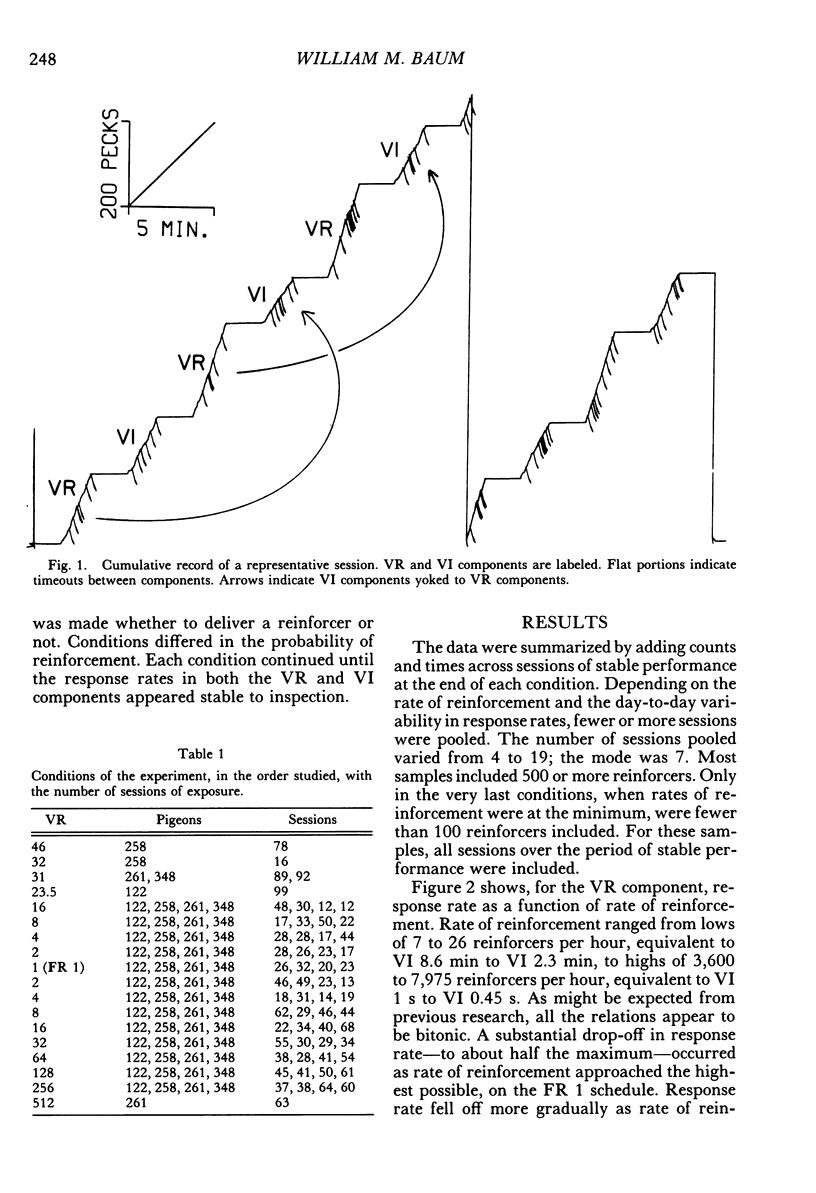
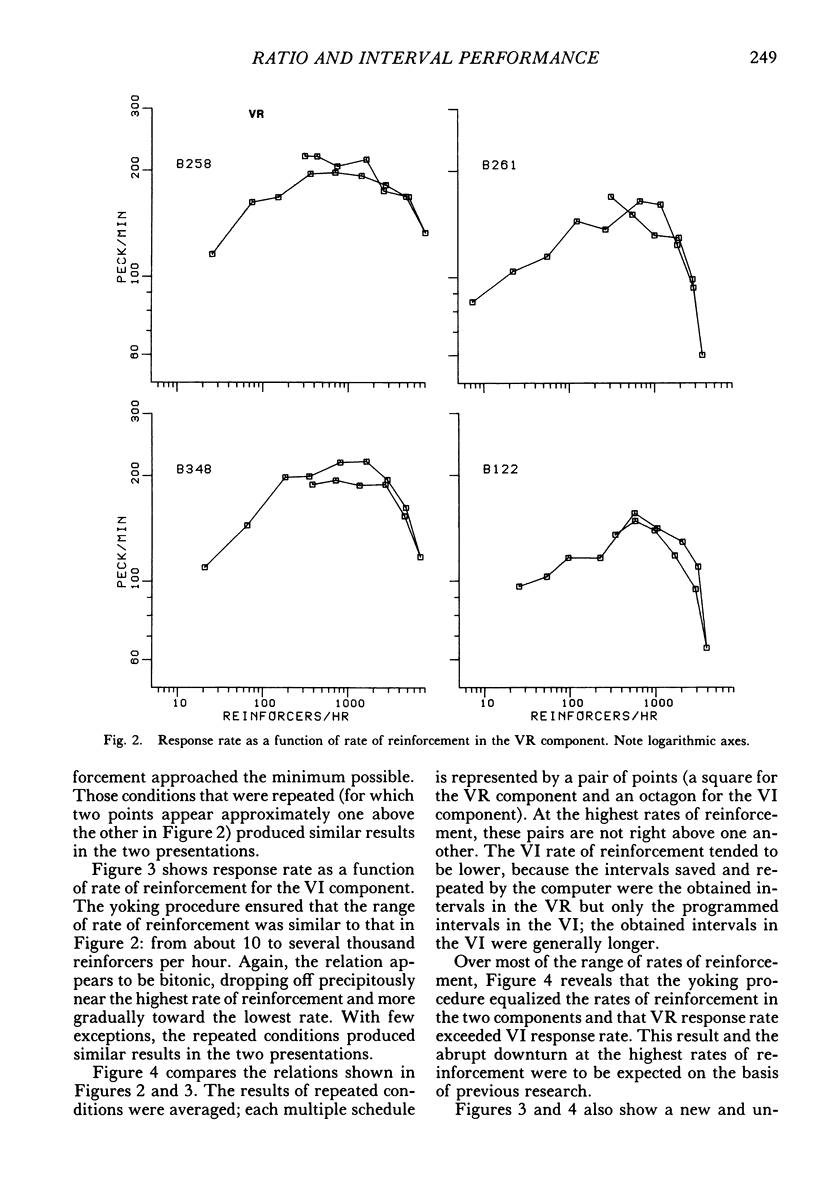

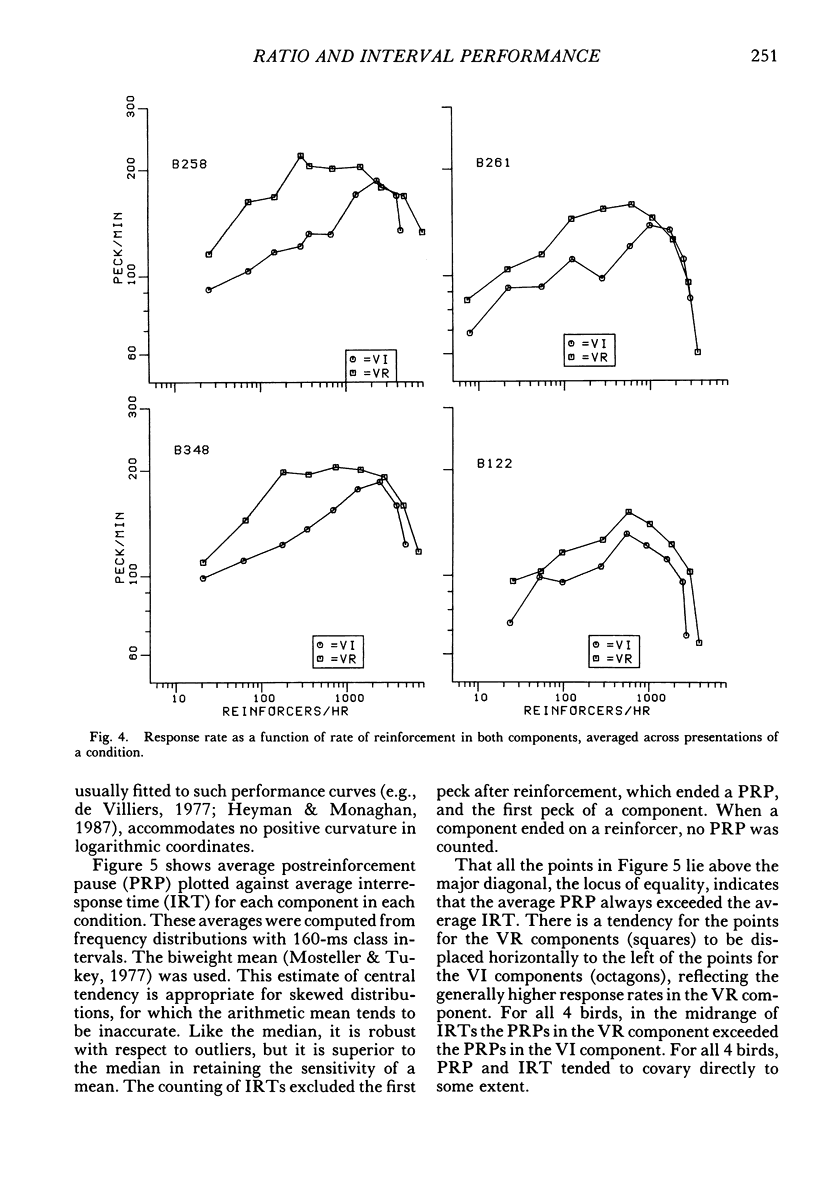


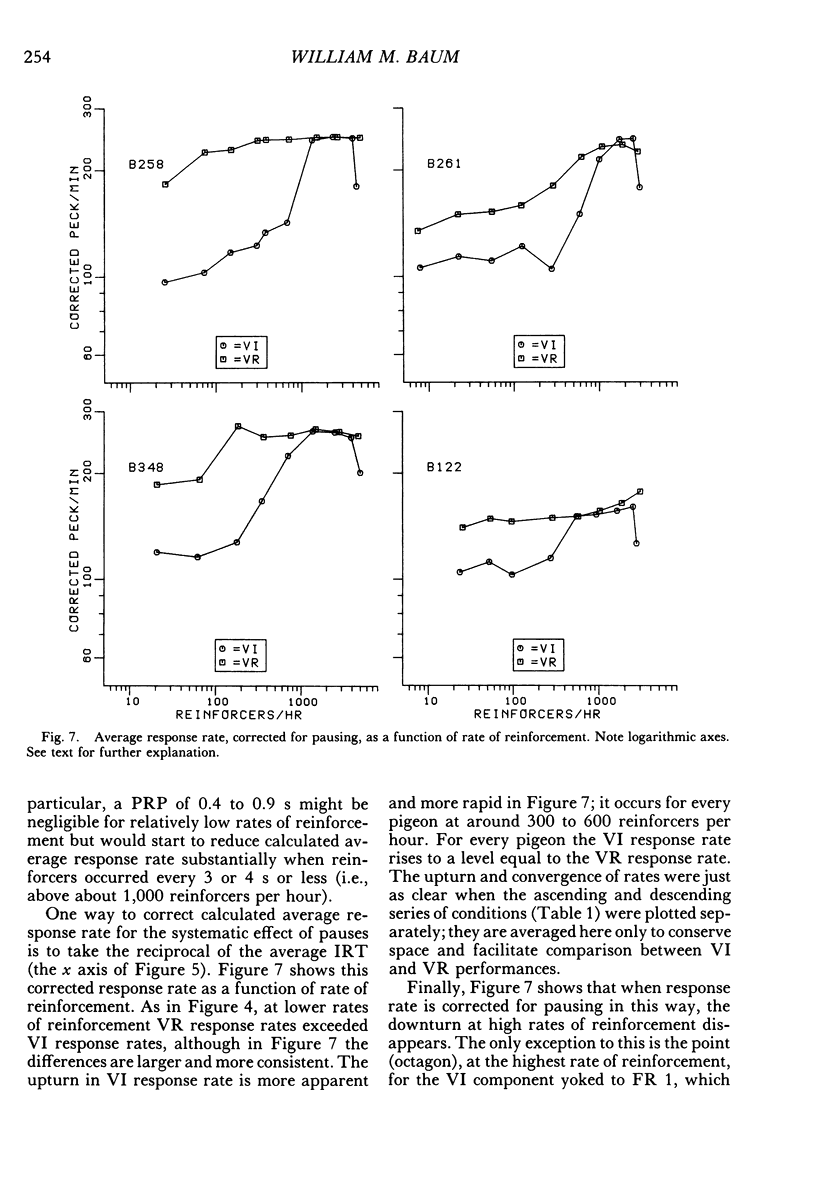
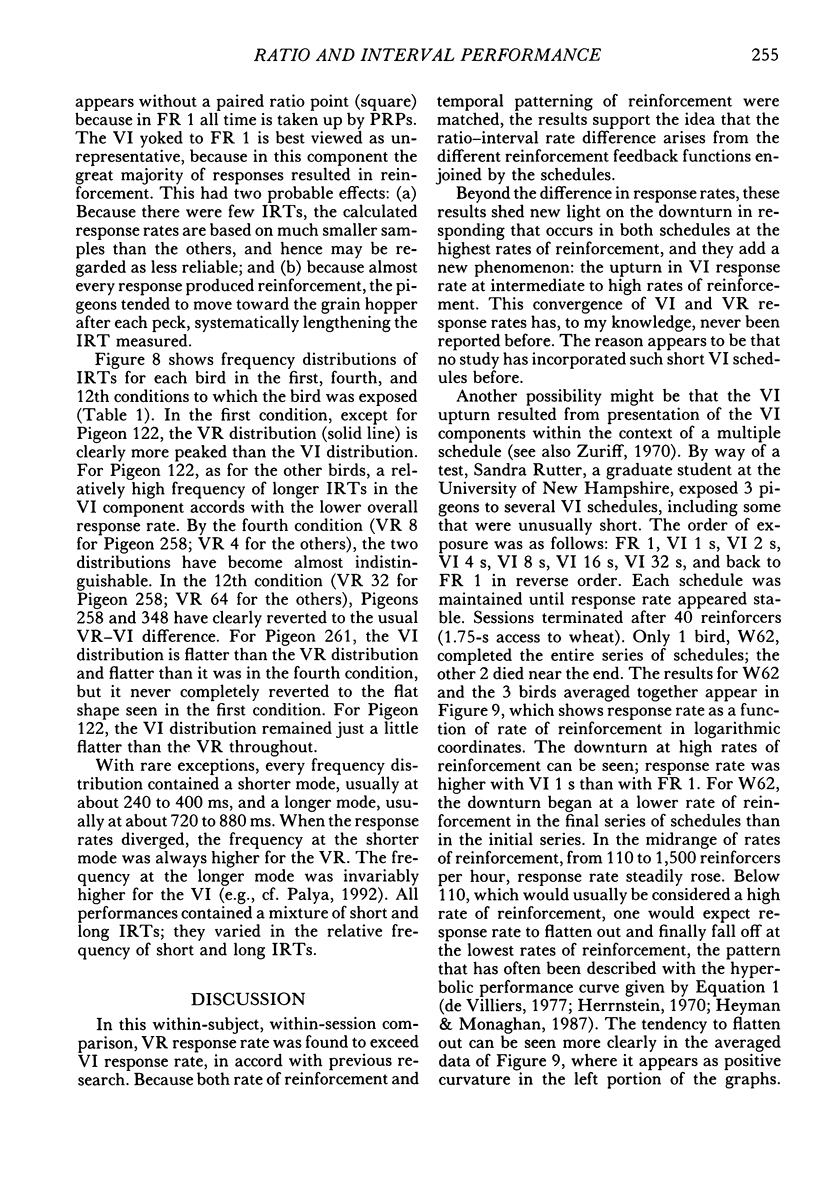
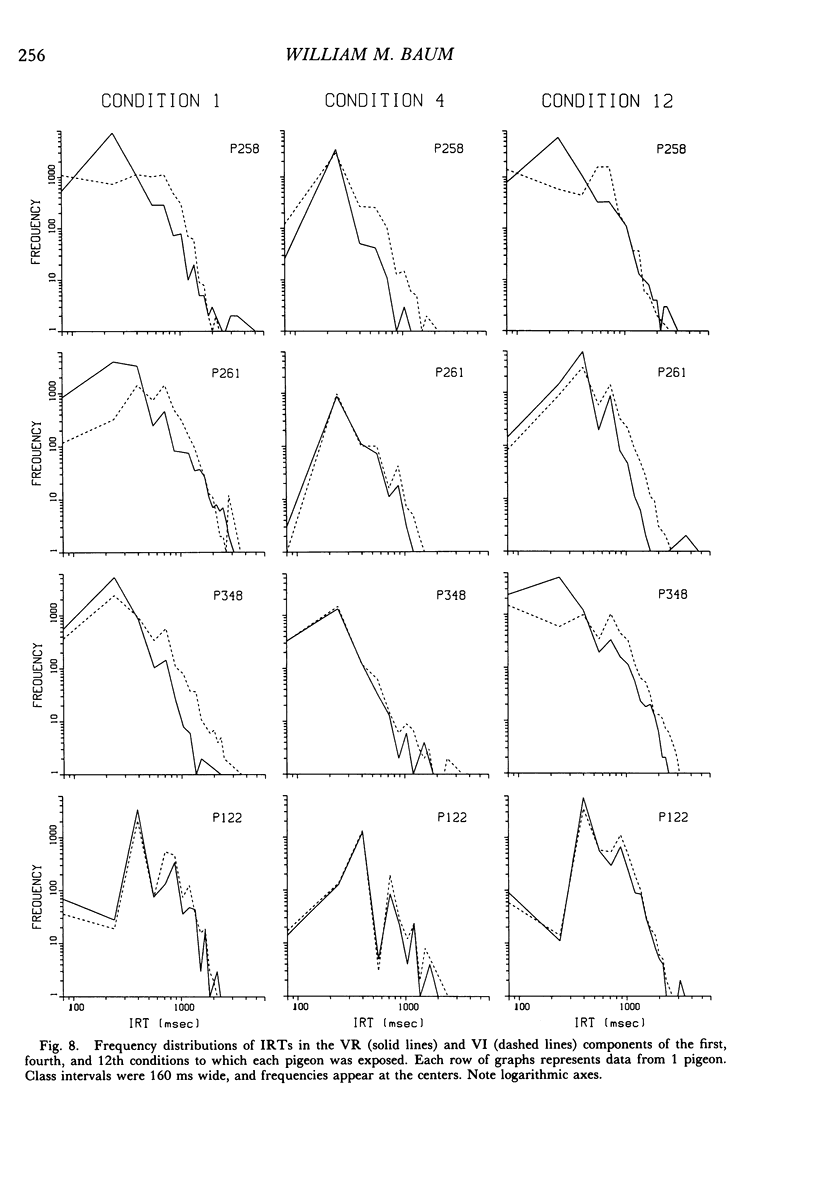
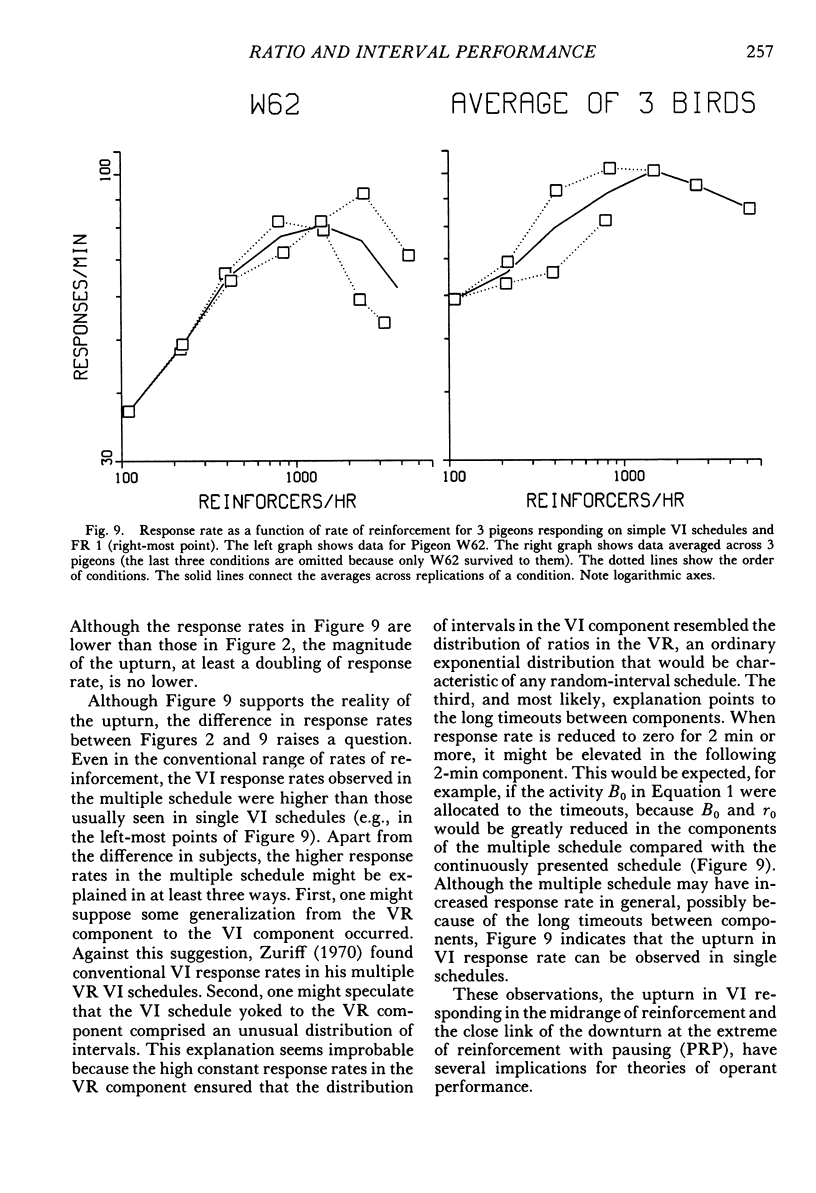
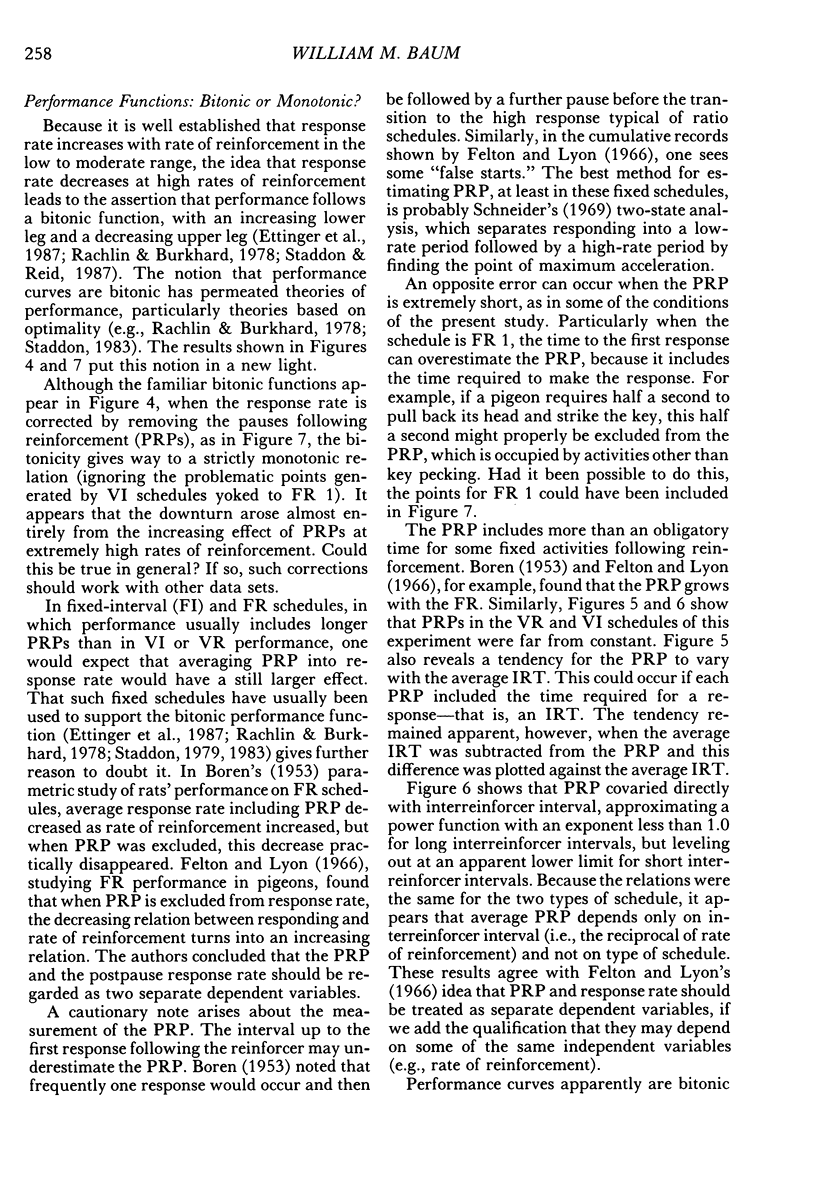
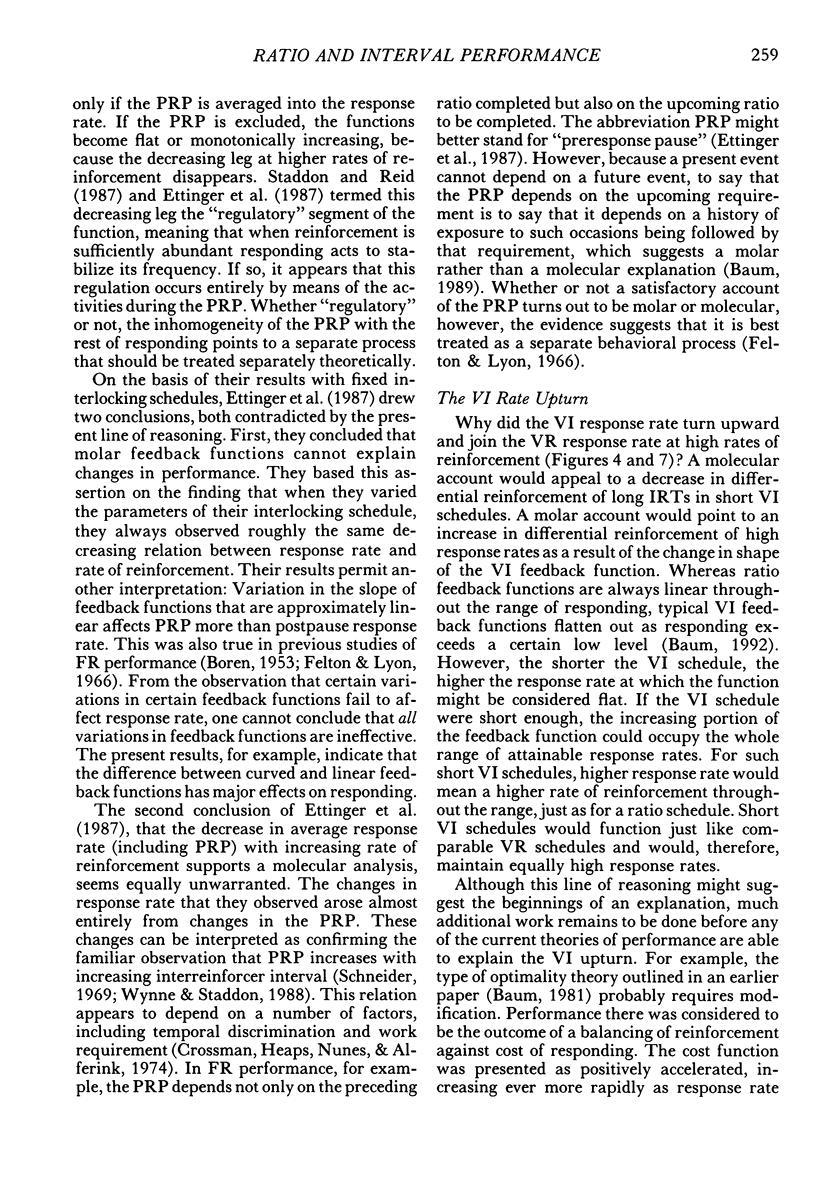
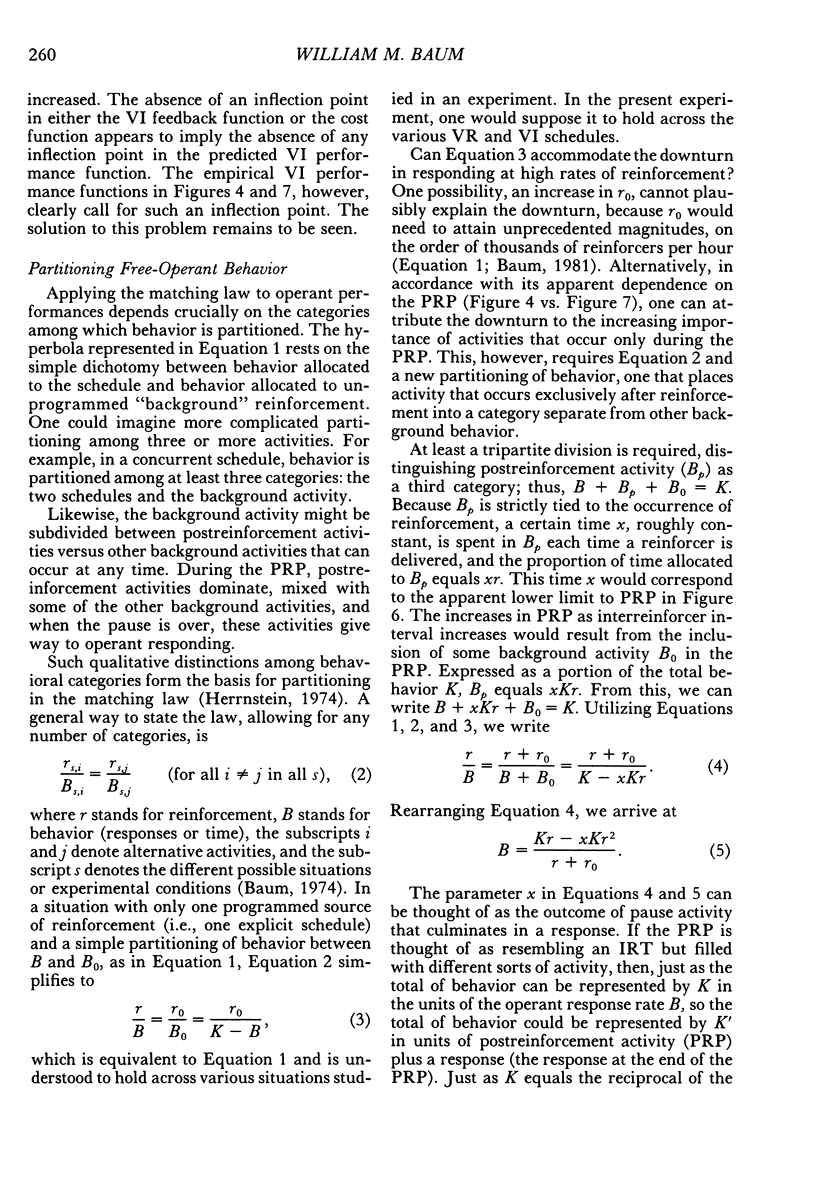
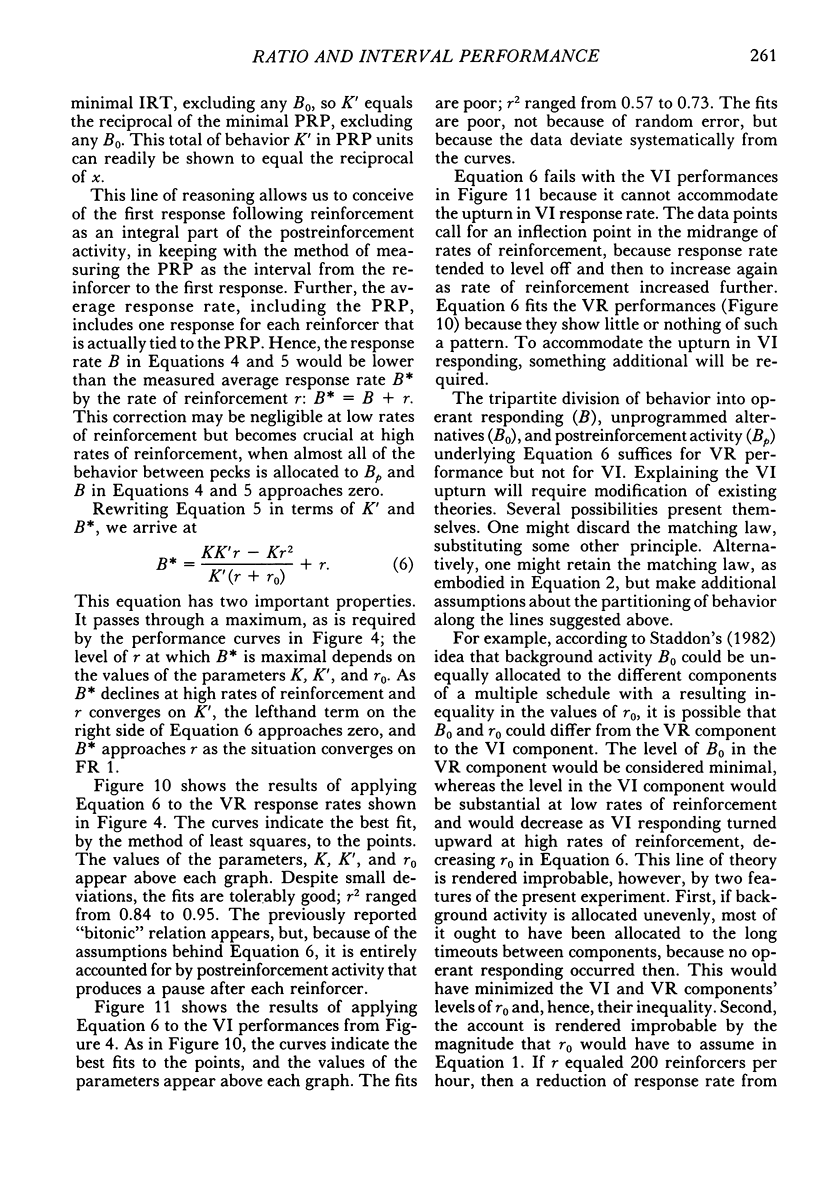
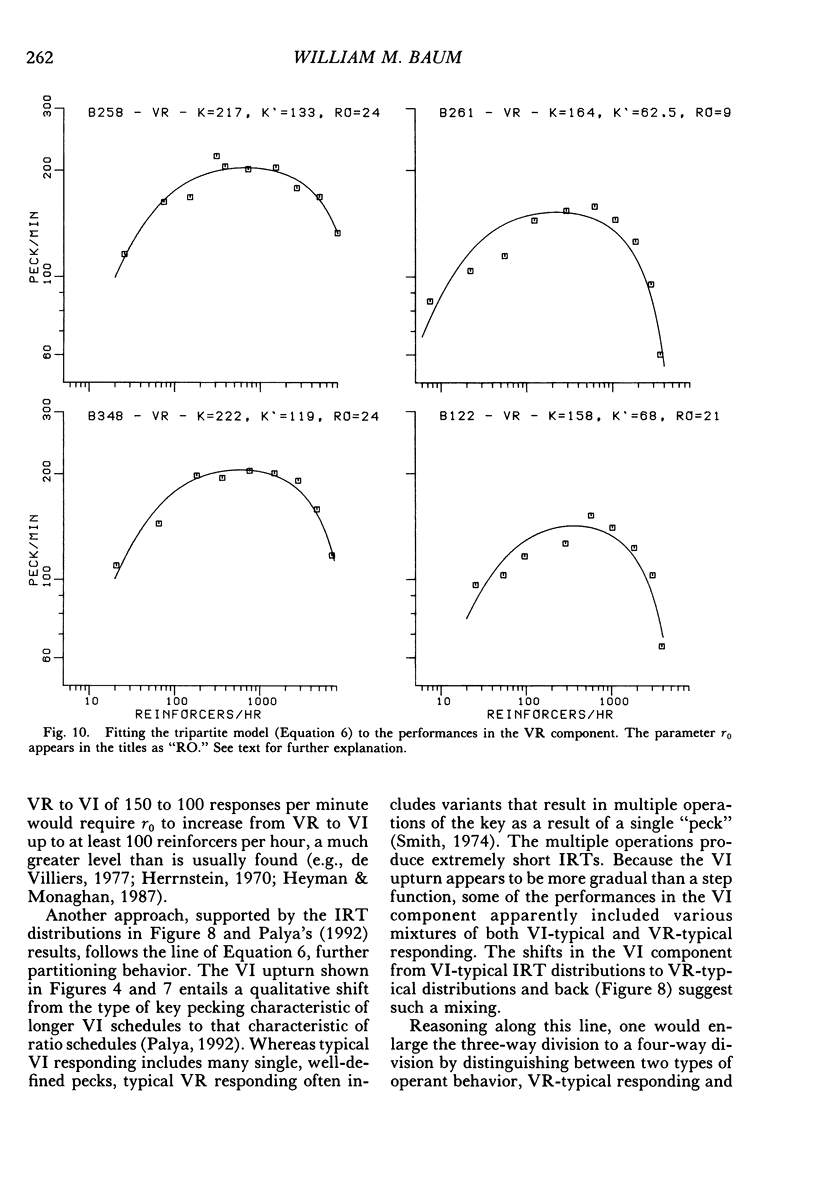


Selected References
These references are in PubMed. This may not be the complete list of references from this article.
- Baum W. M. Chained concurrent schedules: reinforcement as situation transition. J Exp Anal Behav. 1974 Jul;22(1):91–101. doi: 10.1901/jeab.1974.22-91. [DOI] [PMC free article] [PubMed] [Google Scholar]
- Baum W. M. In search of the feedback function for variable-interval schedules. J Exp Anal Behav. 1992 May;57(3):365–375. doi: 10.1901/jeab.1992.57-365. [DOI] [PMC free article] [PubMed] [Google Scholar]
- Baum W. M. Optimization and the matching law as accounts of instrumental behavior. J Exp Anal Behav. 1981 Nov;36(3):387–403. doi: 10.1901/jeab.1981.36-387. [DOI] [PMC free article] [PubMed] [Google Scholar]
- Baum W. M. The correlation-based law of effect. J Exp Anal Behav. 1973 Jul;20(1):137–153. doi: 10.1901/jeab.1973.20-137. [DOI] [PMC free article] [PubMed] [Google Scholar]
- Catania A. C., Matthews T. J., Silverman P. J., Yohalem R. Yoked variable-ratio and variable-interval responding in pigeons. J Exp Anal Behav. 1977 Sep;28(2):155–161. doi: 10.1901/jeab.1977.28-155. [DOI] [PMC free article] [PubMed] [Google Scholar]
- Crossman E. K., Heaps R. S., Nunes D. L., Alferink L. A. The effects of number of responses on pause length with temporal variables controlled. J Exp Anal Behav. 1974 Jul;22(1):115–120. doi: 10.1901/jeab.1974.22-115. [DOI] [PMC free article] [PubMed] [Google Scholar]
- Felton M., Lyon D. O. The post-reinforcement pause. J Exp Anal Behav. 1966 Mar;9(2):131–134. doi: 10.1901/jeab.1966.9-131. [DOI] [PMC free article] [PubMed] [Google Scholar]
- HERRNSTEIN R. J. Relative and absolute strength of response as a function of frequency of reinforcement. J Exp Anal Behav. 1961 Jul;4:267–272. doi: 10.1901/jeab.1961.4-267. [DOI] [PMC free article] [PubMed] [Google Scholar]
- Herrnstein R. J. Formal properties of the matching law. J Exp Anal Behav. 1974 Jan;21(1):159–164. doi: 10.1901/jeab.1974.21-159. [DOI] [PMC free article] [PubMed] [Google Scholar]
- Herrnstein R. J. On the law of effect. J Exp Anal Behav. 1970 Mar;13(2):243–266. doi: 10.1901/jeab.1970.13-243. [DOI] [PMC free article] [PubMed] [Google Scholar]
- Palya W. L. Dynamics in the fine structure of schedule-controlled behavior. J Exp Anal Behav. 1992 May;57(3):267–287. doi: 10.1901/jeab.1992.57-267. [DOI] [PMC free article] [PubMed] [Google Scholar]
- Schlinger H., Blakely E., Kaczor T. Pausing under variable-ratio schedules: Interaction of reinforcer magnitude, variable-ratio size, and lowest ratio. J Exp Anal Behav. 1990 Jan;53(1):133–139. doi: 10.1901/jeab.1990.53-133. [DOI] [PMC free article] [PubMed] [Google Scholar]
- Schneider B. A. A two-state analysis of fixed-interval responding in the pigeon. J Exp Anal Behav. 1969 Sep;12(5):677–687. doi: 10.1901/jeab.1969.12-677. [DOI] [PMC free article] [PubMed] [Google Scholar]
- Smith R. F. Topography of the food-reinforced key peck and the source of 30-millisecond interresponse times. J Exp Anal Behav. 1974 May;21(3):541–551. doi: 10.1901/jeab.1974.21-541. [DOI] [PMC free article] [PubMed] [Google Scholar]
- Wynne C. D., Staddon J. E. Typical delay determines waiting time on periodic-food schedules: Static and dynamic tests. J Exp Anal Behav. 1988 Sep;50(2):197–210. doi: 10.1901/jeab.1988.50-197. [DOI] [PMC free article] [PubMed] [Google Scholar]
- Zuriff G. E. A comparison of variable-ratio and variable-interval schedules of reinforcement. J Exp Anal Behav. 1970 May;13(3):369–374. doi: 10.1901/jeab.1970.13-369. [DOI] [PMC free article] [PubMed] [Google Scholar]


